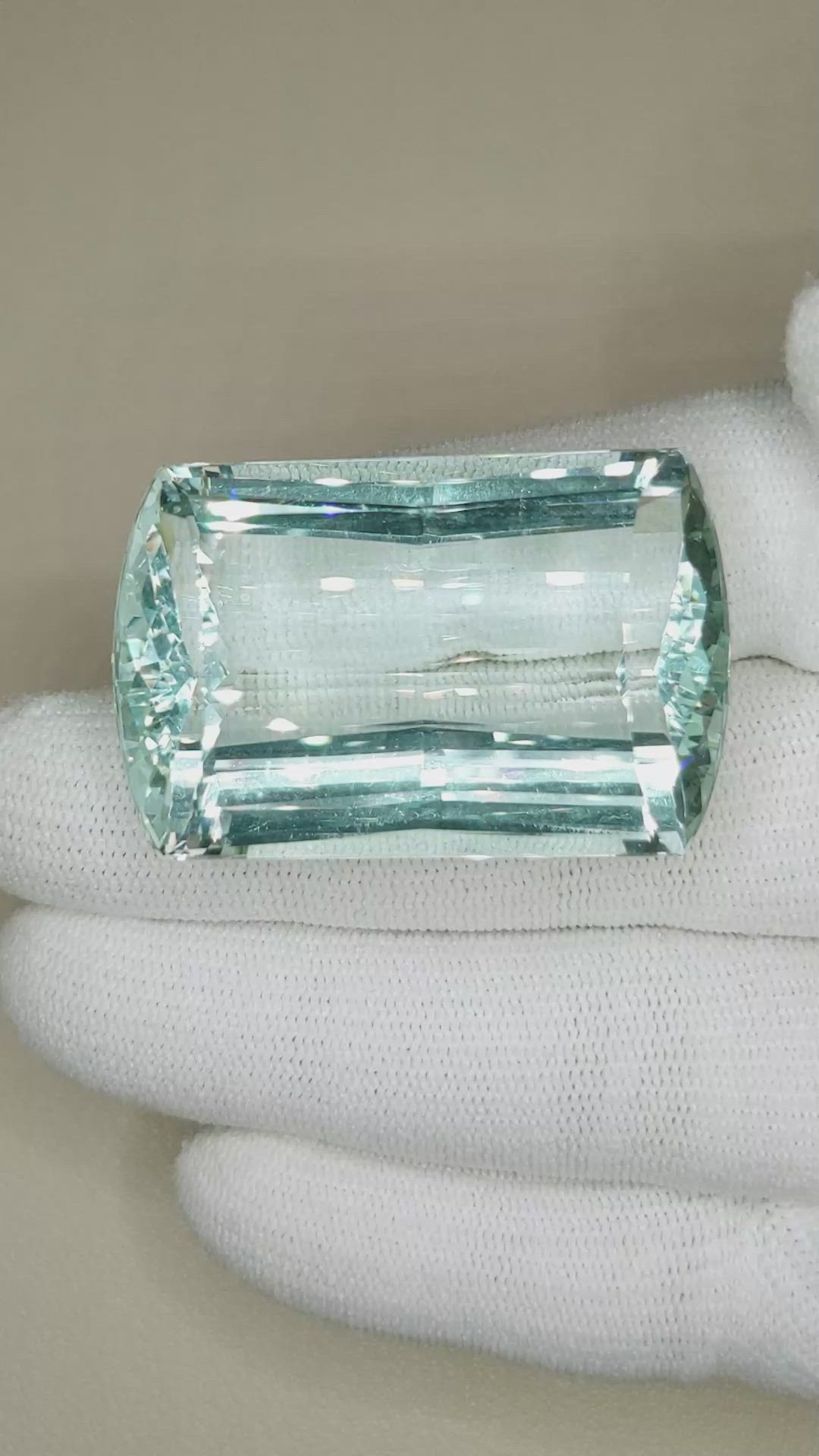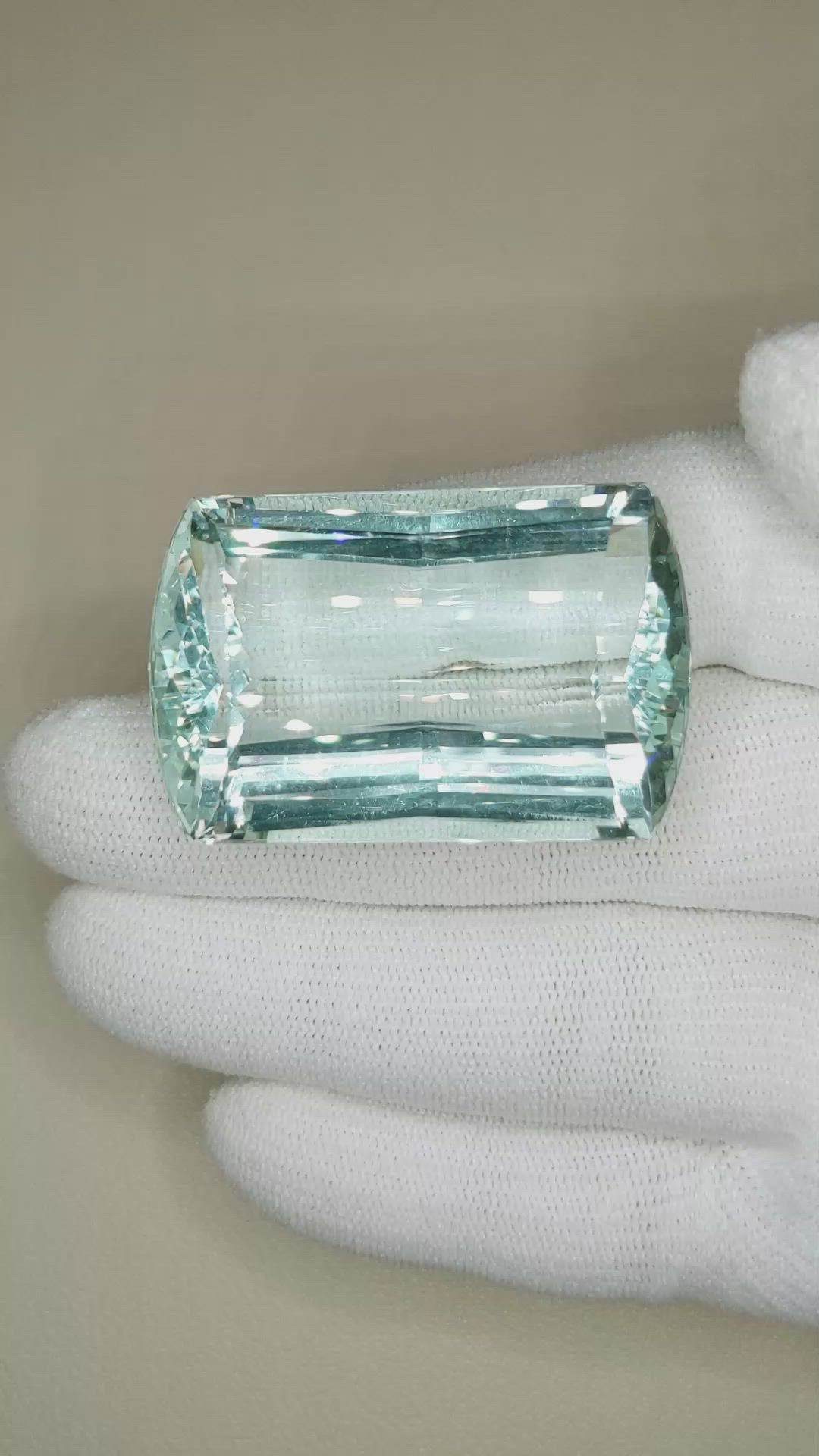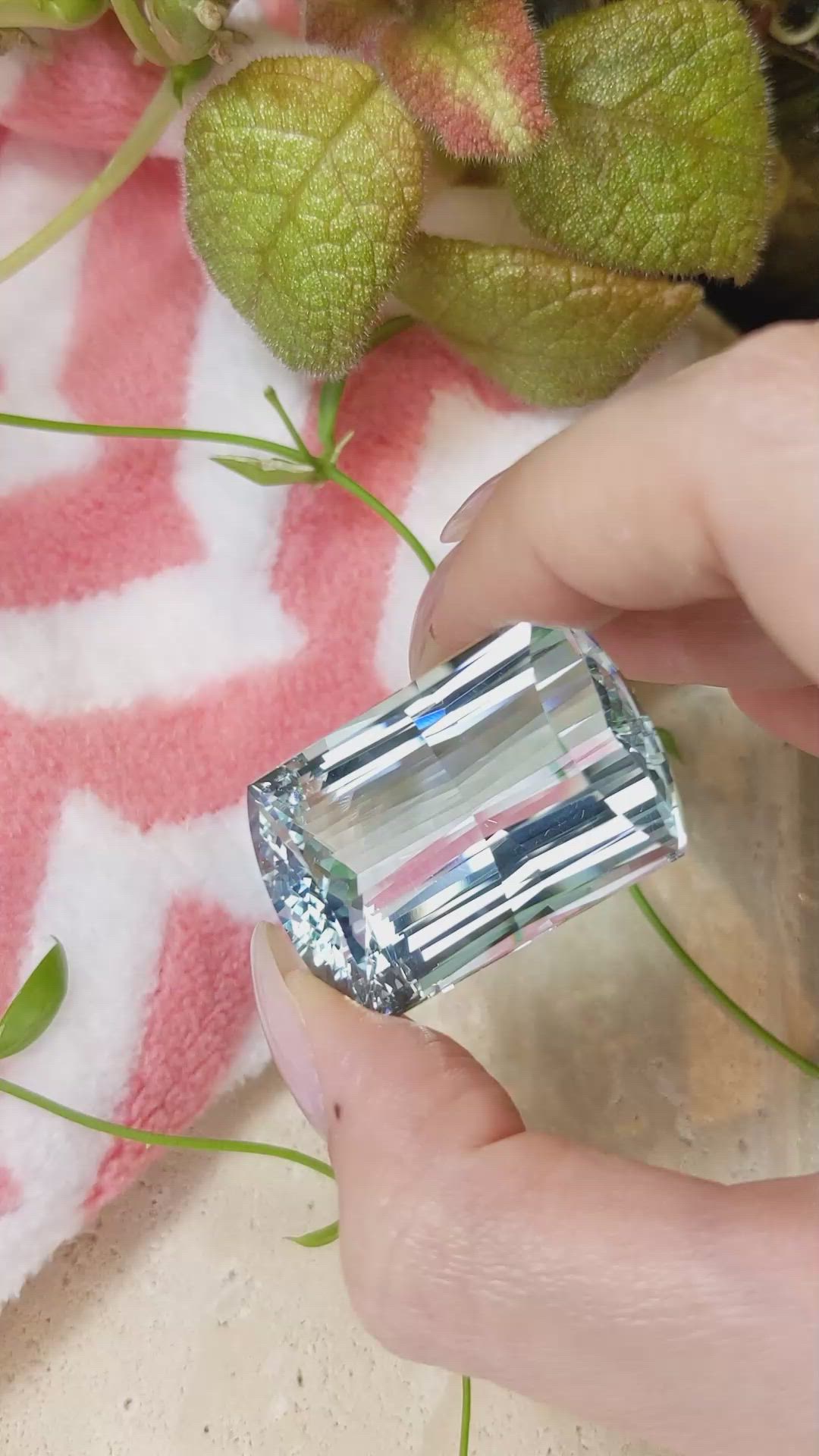- Stone10
- Reports2










96.81 Ct. Aquamarine from Brazil
This loose stone is available to ship now
Item ID: | K18074 |
|---|---|
Dimensions (MM): help | Length: 35.7 Width: 22.7 Height: 14.2 |
Weight: | 96.81 Ct. |
Color: help | Bluish Green |
Color intensity: help | Light |
Clarity: help | Eye Clean |
Shape: help | Cushion |
Cut: | Mixed Brilliant |
Cutting style: | Faceted |
Enhancements: help | Heat Treated |
Origin: help | Brazil |
Per carat price: help | $145 |
This exceptional specimen is a transparent bluish green aquamarine weighing 96.81 carats, presented in a classic cushion outline with dimensions of 35.70 x 22.70 x 14.20 millimeters, cut and finished by The Natural Gemstone Company. The cutter employed a mixed brilliant faceting schema to balance table brilliance with pavilion reflections, producing broad flashes along the length of the stone and scintillation from the corners. Clarity is graded as eye clean when examined at eye level, a notable attribute in a stone of this magnitude, and color intensity is described as light, offering a delicate and refined hue rather than a deep saturated tone. The piece has received professional heat treatment to stabilize and enhance its blue green character, and the polish is excellent, yielding crisp facet junctions and highly reflective facet planes. Origin is Brazil, a source known for producing large, well formed aquamarine crystals in pegmatitic environments, and provenance documentation is available upon request from The Natural Gemstone Company.
To appreciate the stone fully it is necessary to envisage its formation over geological time scales, a process that unfolded millions of years ago deep within granitic pegmatites of the Brazilian shield. Beryl crystals began as a product of late stage magmatic differentiation, where residual melts became enriched in volatiles and rare elements, notably beryllium, lithium, and fluorine. As the residual pegmatitic melt evolved, pockets of silica rich fluid separated from the main body of magma and cooled slowly within brittle fractures and vugular cavities, allowing beryl to nucleate and grow with exceptional clarity and size. Trace concentrations of iron were incorporated into the beryl crystal lattice during growth, with iron present in both divalent and trivalent states, and the relative proportions of these states, together with trace protonation and site occupancy, governed the final bluish green color. Over successive episodes of fluid influx and microfracturing, the crystal developed growth zoning and isolated fluid inclusions that record pressure and temperature conditions, leaving the clean core that our cutters later liberated. Tectonic uplift and erosion then brought the pegmatite bodies closer to the surface where miners could extract these large, gem quality beryl crystals from Minas Gerais style deposits.
The decision to execute a mixed brilliant cut on this cushion shaped aquamarine was driven by several technical objectives, including retention of weight, maximization of in pavilion lengthwise flashes, and the need to minimize the visibility of any growth zoning. The cutter oriented the pavilion to follow the principal growth axis of the original crystal, optimizing light return and preserving more of the original carat weight while achieving a face up size commensurate with the generous measurements. The mixed brilliant strategy pairs a broad table and a crown of small indexed bezels designed to disperse light, with a pavilion configured to produce elongated mirror like flashes, an effect enhanced by carefully controlled crown and pavilion angles, and a table dimension balanced to maintain both scintillation and broad color wash. Facet junctions were executed with precise symmetry to avoid windowing and to reinforce internal light paths, and the girdle thickness was moderated to allow secure setting without introducing visible weight loss. Heat treatment was applied under controlled conditions, using monitored ramp rates and holding temperatures tailored to transform residual green components toward a more desirable blue hue, stabilizing color without compromising clarity or introducing cloudiness. The result is a gem that combines the optical dynamics of a brilliant styled crown with the dramatic lengthwise brilliance of a step oriented pavilion.
For the technically minded collector or jewellery designer, this aquamarine presents a unique set of attributes that reward careful consideration. The stone calculates to an approximate depth ratio of forty nine percent when depth is compared to the average of length and width, a proportion that yields an expansive table and significant face up presence while preserving attractive pavilion geometry for depth controlled return. The eye clean clarity means the stone can be set with minimal concealment, allowing the cutter executed faceting pattern to fully communicate light and color. The light color intensity provides versatility in design, readable in both platinum and warm yellow alloys, and it will perform well as a solitaire showpiece or as the centerpiece for a multi stone composition. Given the heat treatment provenance and Brazilian origin, The Natural Gemstone Company recommends formal grading from an independent laboratory for clients seeking secondary market validation, and offers bespoke setting consultation to ensure the gem is mounted to optimize optical return and mechanical security. This aquamarine embodies both geological history and modern lapidary precision, and it is presented with full technical documentation by The Natural Gemstone Company for the discerning buyer who values exacting craftsmanship and documented origin.





















